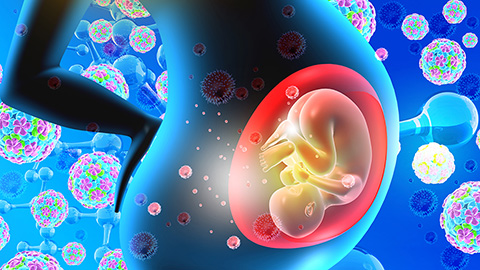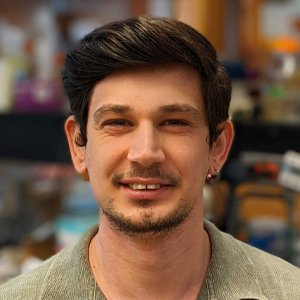Mapping the placenta’s hormone network
Pregnancy rewires a mother’s physiology through complex hormonal signaling, with steroid hormones playing a central role. Produced in the adrenal glands, ovaries and especially the placenta, these hormones shape both maternal and fetal health. Mapping their pathways is key to understanding normal pregnancy and complications such as preterm birth or developmental disorders.

In a recent study published in Molecular & Cellular Proteomics, Christiane Albrecht, from the University of Bern, Rona Karahoda, from Charles University and colleagues profiled 51 steroids by analyzing maternal blood, newborn blood and placental tissue. Using liquid chromatography–mass spectrometry, LC-MS, the researchers measured both classic steroid hormones and a newer class known as 11-oxygenated, or 11-oxy, steroids. The group has explored this complex hormonal landscape by studying samples from 37 healthy pregnancies.
“Steroid pathways are notoriously complex, but by applying a more advanced analytical technique, we were able to profile a much broader spectrum of hormones. This revealed compounds that had previously gone undetected in pregnancy,” Karahoda said.
Although the placenta is not usually considered an androgen-producing organ, this study confirmed the presence of 11-oxy androgens and revealed that keto-steroids are also highly abundant. These findings suggest that the enzyme 11βHSD2 — best known for inactivating stress hormones — may play a broader role in placental steroid metabolism than previously appreciated.
“These results broaden our view of the enzyme’s role in the placenta,” Karahoda said. “They suggest that the placenta not only modulates glucocorticoids but also processes novel androgens and progesterones.
“Although we focused on healthy term pregnancies in this study, the next step would definitely be to look at conditions such as preeclampsia or fetal growth restriction to see how steroid metabolism, and particularly enzymes like 11βHSD2, are altered,” Karahoda said.
Redefining placental steroidogenesis could shed light on fetal programming and complications in pregnancy and provide a more comprehensive understanding of how placental steroid pathways influence both maternal and offspring health across the lifespan.
Enjoy reading ASBMB Today?
Become a member to receive the print edition four times a year and the digital edition monthly.
Learn moreGet the latest from ASBMB Today
Enter your email address, and we’ll send you a weekly email with recent articles, interviews and more.
Latest in Science
Science highlights or most popular articles

Bacteriophage protein could make queso fresco safer
Researchers characterized the structure and function of PlyP100, a bacteriophage protein that shows promise as a food-safe antimicrobial for preventing Listeria monocytogenes growth in fresh cheeses.

Building the blueprint to block HIV
Wesley Sundquist will present his work on the HIV capsid and revolutionary drug, Lenacapavir, at the ASBMB Annual Meeting, March 7–10, in Maryland.

Gut microbes hijack cancer pathway in high-fat diets
Researchers at the Feinstein Institutes for Medical Research found that a high-fat diet increases ammonia-producing bacteria in the gut microbiome of mice, which in turn disrupts TGF-β signaling and promotes colorectal cancer.

Mapping fentanyl’s cellular footprint
Using a new imaging method, researchers at State University of New York at Buffalo traced fentanyl’s effects inside brain immune cells, revealing how the drug alters lipid droplets, pointing to new paths for addiction diagnostics.

Designing life’s building blocks with AI
Tanja Kortemme, a professor at the University of California, San Francisco, will discuss her research using computational biology to engineer proteins at the 2026 ASBMB Annual Meeting.

Cholesterol as a novel biomarker for Fragile X syndrome
Researchers in Quebec identified lower levels of a brain cholesterol metabolite, 24-hydroxycholesterol, in patients with fragile X syndrome, a finding that could provide a simple blood-based biomarker for understanding and managing the condition.

